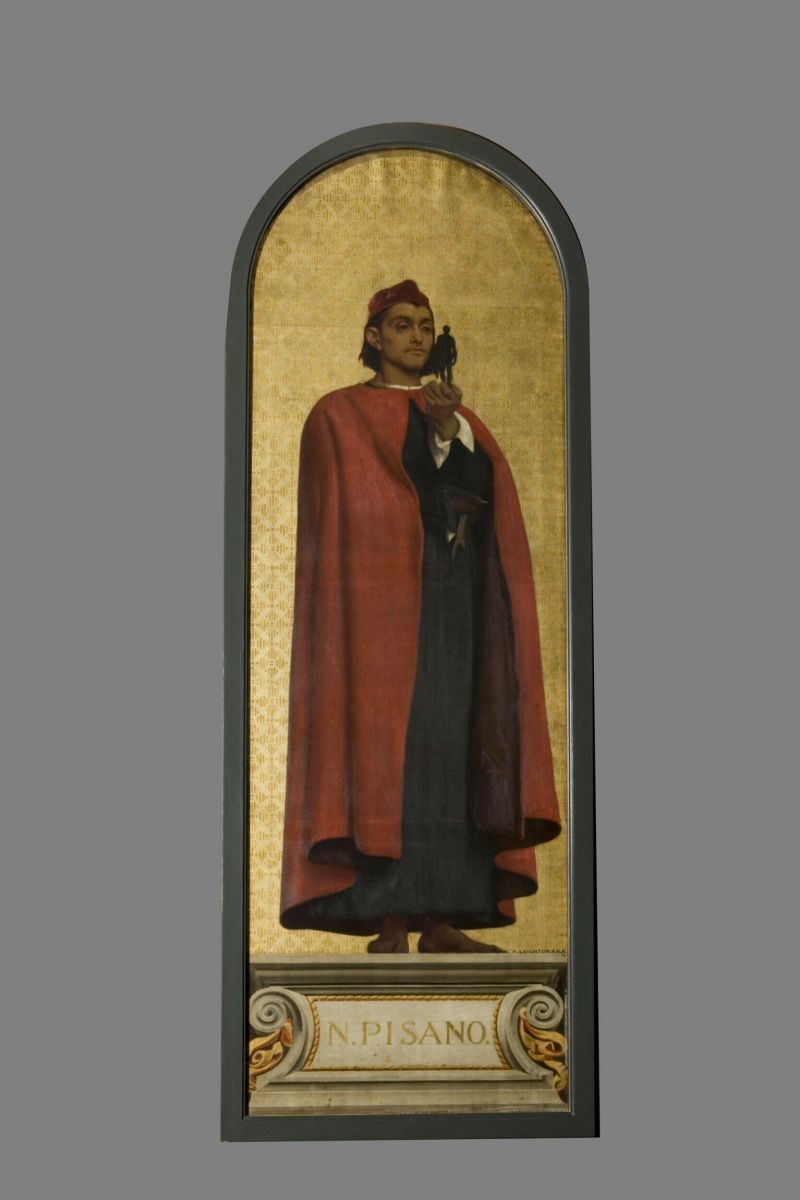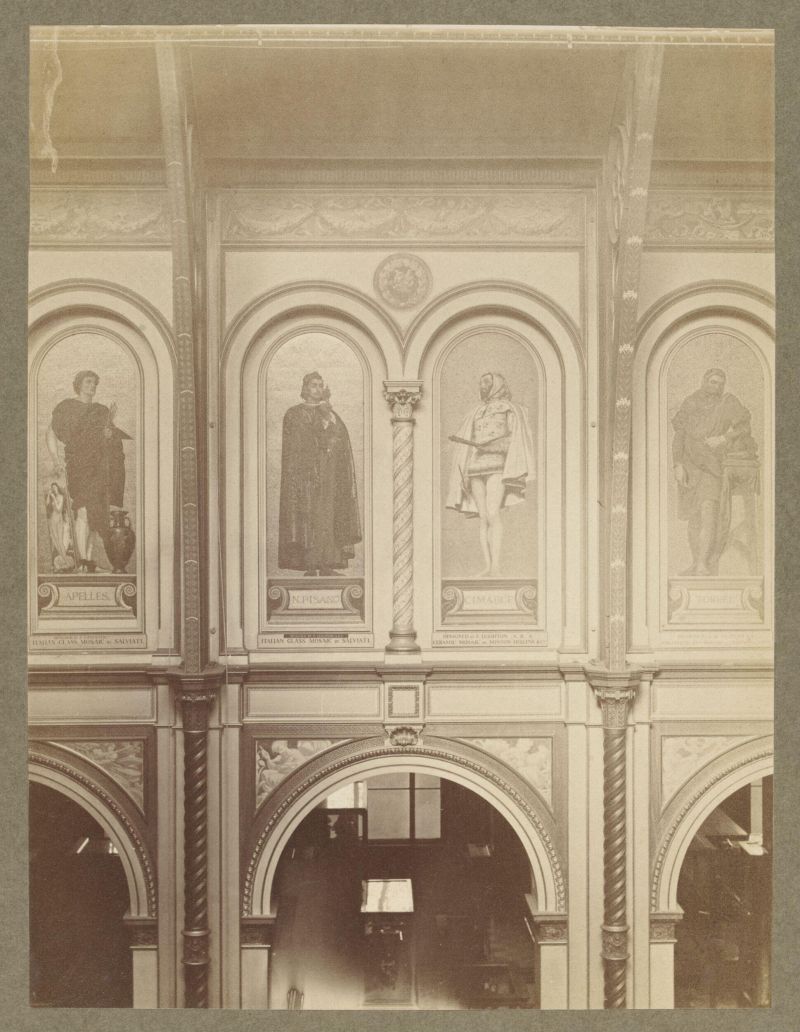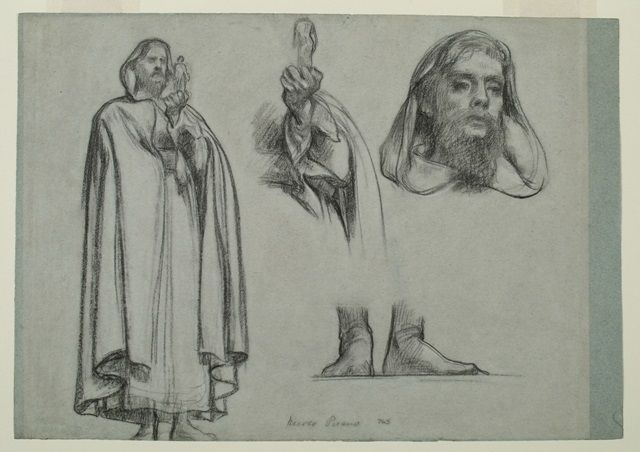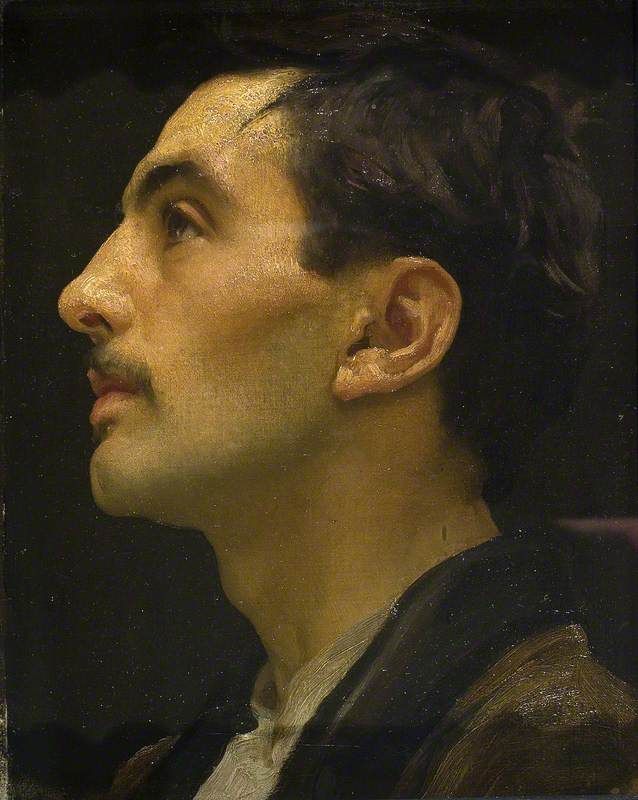This beautifully painted sketch is Leighton’s original idea for the figure of the thirteenth-century Italian sculptor Nicola Pisano commissioned to be executed in mosaic for the South Court of the new South Kensington Museum. Leighton had been commissioned to complete the full-length figures of Pisano and his contemporary, the painter Cimabue, having included both in his 1855 work Cimabue’s Madonna Carried in Procession through the Streets of Florence (National Gallery, London). The present fluid oil sketch shows Leighton working from a life model to capture the resolute features of the young sculptor and establish the complex foreshortening of the left hand, which is shown holding a small bronze modello; the lithe, taut hand displays Leighton’s extraordinary facility as a designer. Previously unrecorded, this beautiful sketch shows the care with which Leighton went to complete major public commissions early in his career.

Lord Frederic Leighton
Nicola Pisano: design for a mosaic in the Museum (the 'Kensington Valhalla')
Oil on canvas
104 ½ x 34 ½ inches; 2654 x 876 mm
c. 1868
© Victoria and Albert Museum, London
Unlike many of his contemporaries, Leighton received a comprehensive Continental training. Leighton studied first at the Städelsches Kunstinstitut in Frankfurt where he worked under the Nazarene painter Philip Veit. He subsequently worked in Paris at the atelier of Alexandre Dupuis where he met Ingres, Delacroix, Corot and Millet. Spending time studying in Florence at the Accademia di Belle Arti, Leighton became passionately interested in the works of the trecento and quattrocento, his first exhibition work was Cimabue Finding Giotto in the Fields of Florence (Baroda Museum and Picture Gallery). It was Leighton’s monumental depiction of Cimabue’s Madonna Carried in Procession through the Streets of Florence shown at the Royal Academy in 1855 which brought him his first widescale critical acclaim. The large, light-filled composition depicts a scene related in Vasari in which Cimabue’s Ruccelai Madonna was taken in triumph to the church of Santa Maria Novella in Florence.

Interior view of South Court showing ‘Kensington Valhalla’ mosaics of Apelles, Pisano, Cimabue and Torrel
Photographed by Isabel Agnes Cowper, ca. 1875
© Victoria and Albert Museum, London
Leighton continued to reside on the Continent living in Rome until the early 1860s when he began a series of large-scale commissions in Britain. Leighton was one of several eminent artists commissioned to produce full-length figures of famous artists to decorate the new South Kensington Museum. The figures were to be rendered in glass mosaic by the Venetian Antonio Salviati. A drawing at Leighton’s House (LH/D/0763) survives showing Leighton’s initial thought for the full-length figure of Pisano, wearing a hooded cloak, bearded looking at a small bronze statuette. The sheet includes details of the left hand gripping the figure, head and feet. Our sketch shows Leighton developing the salient ideas of his composition, presumably with heightened awareness that his design was to be translated into mosaic and needed to be legible from a distance. Most significantly, Leighton decides the figure should be beardless, replacing the cowl with a red velvet cap and showing the figure in a red outfit, with a white undershirt. This oil sketch was clearly made ad vivum from a model to clarify the complex position of the left hand holding the statuette. The model is identifiable as the same model Leighton used for the features of Christ in the frescos he was working on of The Wise and Foolish Virgins in the church of St Michael & All Angels, Lyndhurst in Hampshire and The Golden Hours at the same time. Leighton captured the model in a beautiful life study now at Leighton House Museum, London. The present oil sketch is close to the finished cartoon, but with a number of distinct differences in the conception of the costume. This engaging study is painted with a fluidity and confidence found in the best of Leighton’s oil sketches.
We are grateful to Richard and Leonée Ormond for confirming the attribution of this work on first-hand inspection.




